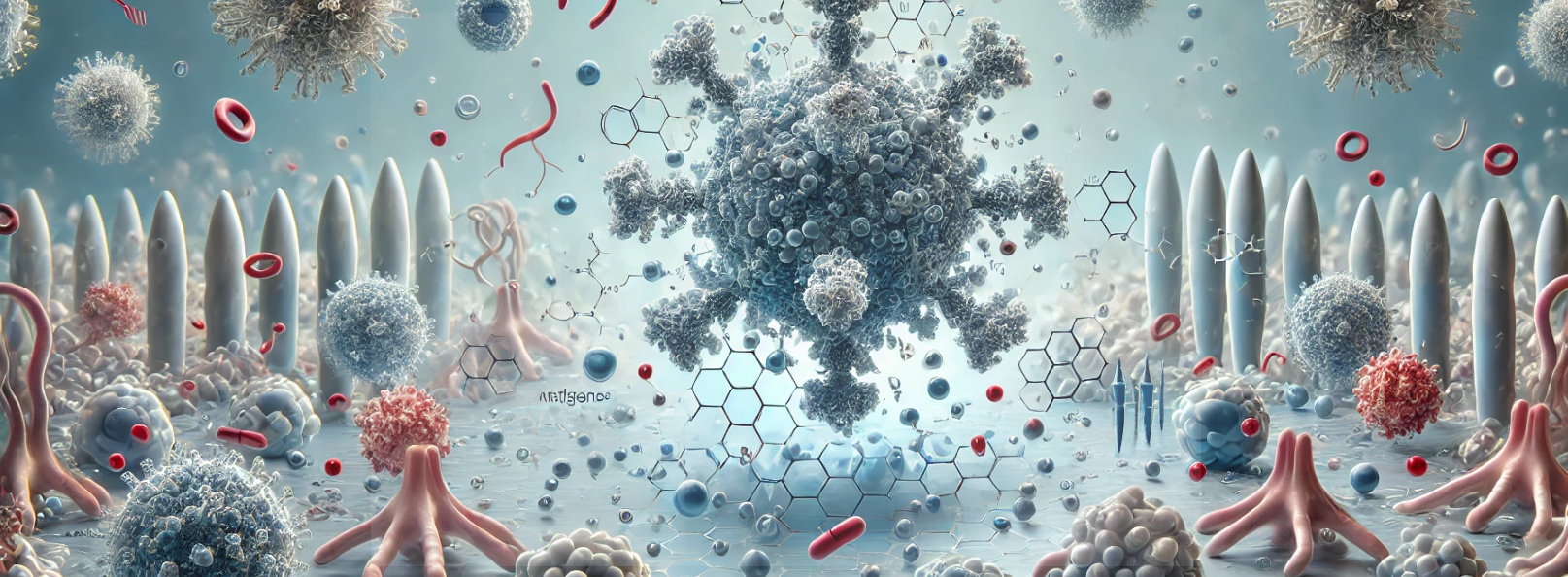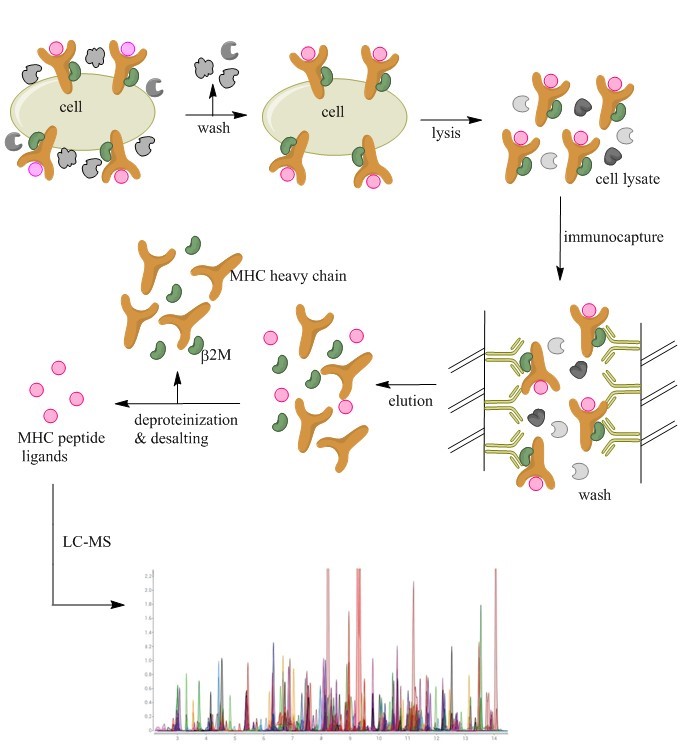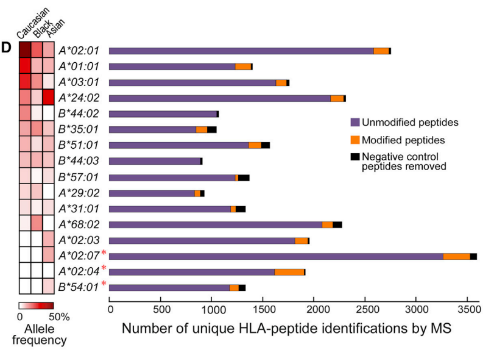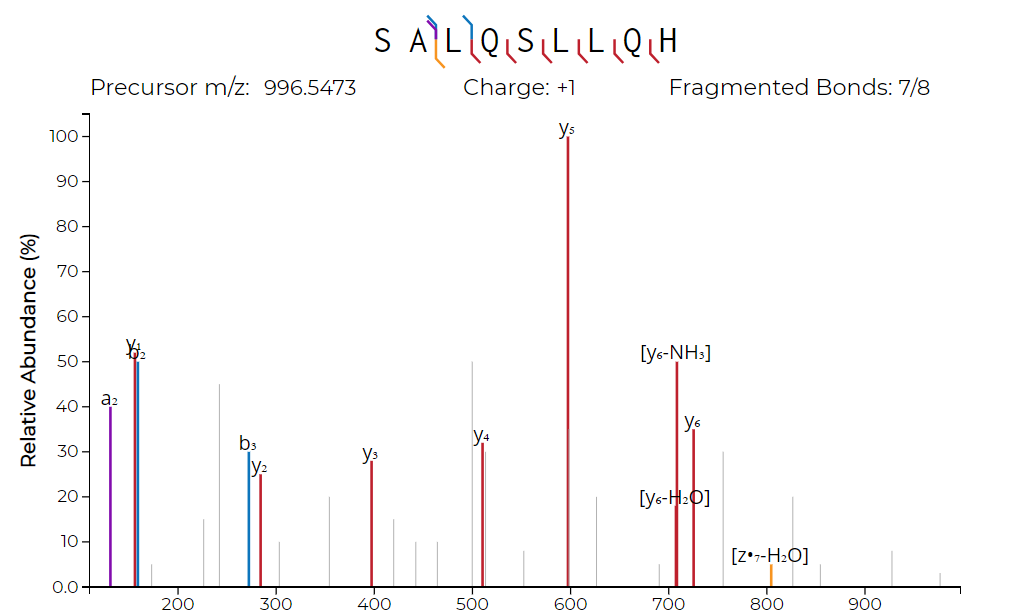class I HLA epitope detection
1.Background

The specific recognition of peptides presented by human leukocyte antigen (HLA) complexes by T-cell receptors (TCRs) underpins human T-cell immune responses. This specificity is critical for defense against infectious diseases, regulation of autoimmunity, antitumor activity, and cancer immunotherapy.
HLA is divided into two major classes:
- Class I HLA (HLA-A, HLA-B, HLA-C) is broadly expressed on nearly all nucleated cells and typically presents short peptides of ~8–13 amino acids.
- Class II HLA is mainly expressed on professional antigen-presenting cells and includes HLA-DP, HLA-DQ, HLA-DR, presenting longer peptides.
Tiger Cellular Remedy also offers HLA typing and HLA tetramers, described in separate sections.
CD8⁺ T cells generally recognize antigens presented by class I HLA and exert cytotoxic activity in antitumor immunity and antiviral defense.Studying HLA-presented antigens is therefore of major significance for both basic research and clinical therapy.
The discovery of HLA epitopes, combined with TCR sequencing, is crucial for developing tumor-specific TCRs:
- After identifying antigenic epitopes, stimulate leukocytes from patients or healthy donors with these peptides to obtain highly specific cytotoxic T cells.
- Combining antigen discovery with tetramer/multimer preparation enables rapid screening of antigen-specific TCRs from patients and healthy donors.
- Testing both lesional and healthy tissues from the same patients can reveal patient- and cohort-specific antigens, including neoantigens, thereby guiding therapeutic strategies for that patient population.
- Beyond cell therapy, target discovery also supports cancer vaccine development and other immunotherapies for autoimmune diseases.
Mass spectrometry (MS)–based epitope detection is currently the most direct and faithful approach. Compared with the combination of NGS and in-silico prediction, MS yields the most reliable and accurate results—especially in presenting the epitopes’ abundance, i.e., the true level of HLA–peptide presentation on the cell surface—greatly aiding researchers and clinicians in selecting the most promising immunotherapies.
In addition, MS can detect post-translational modifications (PTMs) of antigens—such as oxidation, phosphorylation, and citrullination—which cannot be obtained from NGS.
2.Technical Workflow

The left panel illustrates the process of extracting and analyzing MHC (major histocompatibility complex) peptide ligands from cells using liquid chromatography–mass spectrometry (LC–MS). The workflow comprises the following steps:
1.Tissue/cell processing and lysis
- Wash tissues/cells to remove interstitial proteins and other contaminants.
- Perform gentle lysis to release surface peptide–HLA (pHLA) complexes while preserving their integrity.
2.Immunoaffinity capture
- Capture pHLA molecules using specific antibodies immobilized on a solid support, effectively enriching pHLA from complex lysates.
- Wash repeatedly to remove nonspecific proteins and impurities.
- Elute pHLA from the solid matrix.
3.Protein dissociation and desalting
- MHC molecules exist as complexes with peptide ligands and β₂-microglobulin (β₂M). Dissociate the protein complex to release peptide ligands.
- Desalt samples to prepare for LC–MS analysis.
4.LC–MS analysis
- Inject the cleaned peptide sample onto a chromatography column to separate distinct peptides.
- Introduce separated peptides into the mass spectrometer to detect and identify peptide masses and compositions. Results are typically displayed as spectra, with each peak representing a specific peptide.
3.Results

2016 Ablin et.al.Immumity

Compilation of some test results
Capture efficiency: Tiger Cellular Remedy’s antigen-capture workflow effectively captures antigens in 85–90% of samples.
• Peptide yield: Comparable experiments reported in leading international journals yield ~1,000-3,000 peptides per sample; Tiger Cellular Remedy typically obtains ~1,300–4,500 peptides per sample.
